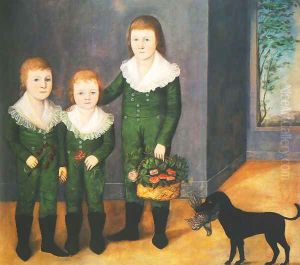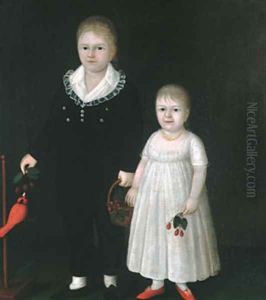Joshua Johnston Paintings
Joshua Johnston, also spelled Johnson, was an African-American portrait painter who is often regarded as the first person of color to make a living as a painter in the United States. The details of Johnston's life are somewhat obscure, and much of what is known has been pieced together from various historical records. He was born around 1763, and there is evidence to suggest that he was the son of a white man and an enslaved black woman, living in Baltimore County, Maryland.
Johnston gained his freedom by 1782 and established himself as an artist in the Baltimore area. He advertised his services in the local newspapers, identifying himself as a 'self-taught genius,' reflecting both his lack of formal training and the era's romantic notion of the natural, untutored artist. His clientele primarily consisted of wealthy landowners, merchants, and politicians. During his career, he is believed to have painted between 80 and 100 portraits.
His work is characterized by a certain formality and use of flat areas of color, but also demonstrates an attention to detail and a clear effort to capture the individuality of his sitters. Johnston's style was influenced by the neoclassical aesthetic that was popular at the time, though his self-taught methods lent a distinctive look to his paintings. Many of his portraits feature the subjects seated with books or other personal items that reflected their interests and social status.
Johnston's career declined later in life, and the last known records of his life are from 1824, which is also presumed to be around the time of his death. However, no definitive records of his death have been found. For many years, Joshua Johnston was forgotten, and his works were often attributed to unidentified or more well-known artists. It wasn't until the mid-20th century that art historians began to properly credit him for his contributions to American art and recognize the significance of his role as a pioneering African-American artist.

